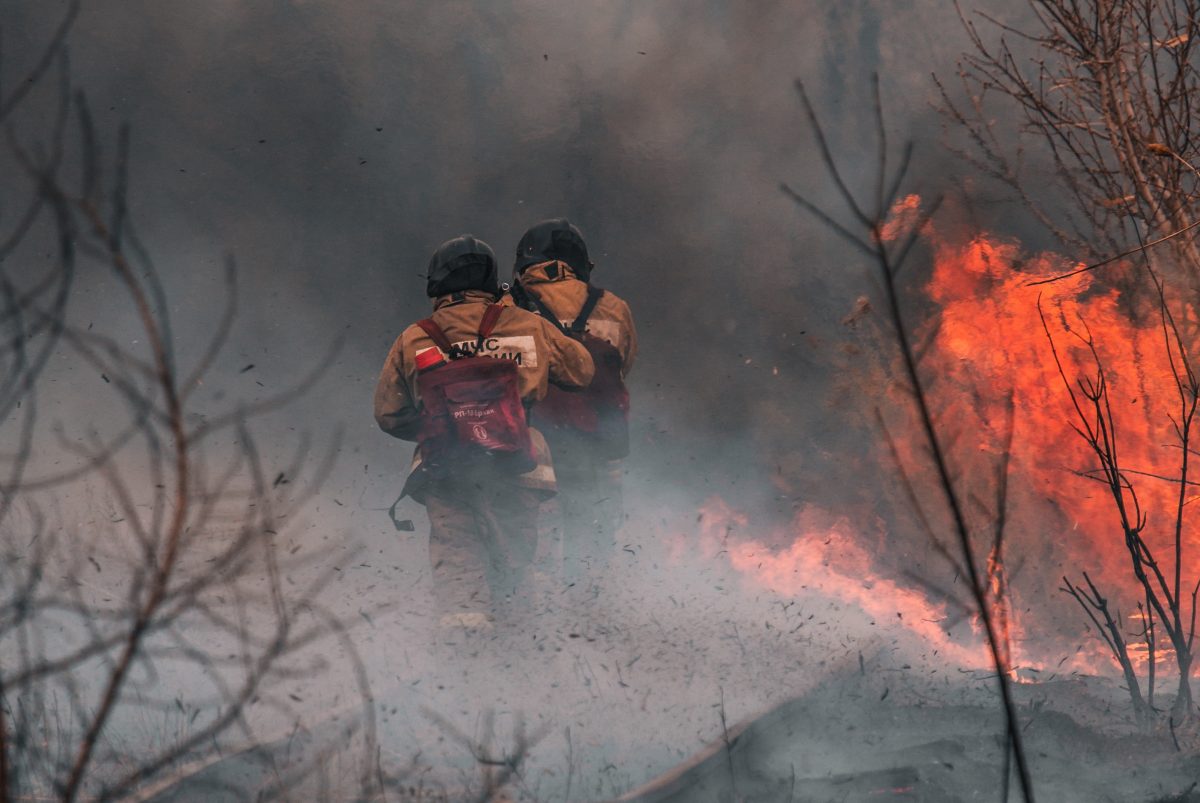Tremendous academic debate has ensued after the Stop Ecocide Foundation’s 2021 proposal to amend the Rome Statute in such a way that a new “fifth” international crime of “ecocide” would be included. This discourse has largely focused on problems with defining the crime, the practical challenges of its international acceptance, and whether international criminal law is even the appropriate avenue to address its concerns. What has received less attention is the implications of this potential recognition over other regimes of international law. This post inquires into one such emerging question, namely the question of whether the “responsibility to protect” (R2P) civilian populations from mass atrocities could be invoked in the context of environmental exigencies. In other words, this post explores an “environment-oriented R2P” that, if accepted, could justify the use of force. “Mass atrocities” under the existing R2P cover three of the four crimes already mentioned in the Rome Statute; the fourth crime is “aggression”, which would nevertheless justify States responding with force in self-defence.
Craig Martin has predicted that climate change-induced suffering will in fact “exert pressure for changes” to the jus ad bellum regime in a similar way that the international inaction in Rwanda and Bosnia, and the subsequent forceful interventions in Kosovo pushed R2P in mainstream discourse. Through this piece, I show that there is already context-specific conversation between States, which, when inspected closely, shows linkages to R2P. Taking forward Martin’s larger thesis, I specifically contend for the rejection of an environment-oriented R2P because of the labyrinth of complications its threshold would carry in light of the principle of “common but differentiated responsibility” (CBDR). While covering these arguments, I show the importance of asking what exactly a prospective environment-oriented R2P would seek to achieve, whom it would seek to protect, and against what.
An Environment-Oriented R2P: Anthropocentrism, Ecocentrism, and Somewhere in Between
Readers may have noticed that the title of this piece does not specify what or who would be protected by an environment-oriented R2P. This is because its definition would vary depending on the priorities of its supporters. For anthropocentric proponents of this concept, R2P would only act as an exception to the force prohibition when mass human suffering results from environmental crises. As early as 2001, the International Commission on Intervention and State Sovereignty (ICISS) argued that foreign States have the responsibility to intervene in States facing “overwhelming environmental and natural catastrophe” (p. 33). This is only when the affected State is “unable or unwilling” to protect the life of persons in its territory. But this environmental ground was not acknowledged by the General Assembly at the World Outcome Summit when addressing R2P.
Almost two decades later, this question has resurfaced in discussions around the Draft articles on the “protection of persons in the event of disaster” (DA) adopted by the International Law Commission (ILC) in 2016. This work only concerns disasters (whether man-made or natural) that, to put it simply, cause significant human suffering or impair human society (commentary to DA 3, para 5). The coverage of the DAs then is clearly anthropocentric. With frequent mentions of climate change, sea-level rise and such in the ILC’s commentaries, it is evident that climate considerations were part of the imagination that drove the DAs. One crucial feature here is that in case a disaster “manifestly exceeds” the response capacities of a disaster-affected State, then it has the “duty” to seek external assistance (DA 11). If such a request is made, other States or organisations “may” offer assistance [DA 12(1)]. The actual “provision” of foreign assistance, such as through disaster relief forces on ground, must be with the “consent” of the affected State [DA 13(1)]. But most critically, “consent to external assistance shall not be withheld arbitrarily” [DA 13(2); emphasis mine].
Special Rapporteur Valencia-Ospina, who assisted the ILC, argues that because the right to life demands “positive” measures to be taken by a State, the refusal of a disaster-affected State to accept foreign aid might “under certain conditions, constitute a violation of the right to life” (para. 59). What the ICISS report did by linking “natural catastrophe” to human rights, the ILC has done for “disasters”. But the ILC is silent on the question of what the consequence of a disaster-affected State “arbitrarily” refusing external assistance would be. Can foreign States then send in their disaster forces against the consent of the territorial State? This is the situation which Craig Martin envisions by taking the burning of the Amazon as a hypothetical example, since Brazil was hostile to foreign assistance. While not specifically addressing the consequence of such refusal, some Global South States have not taken kindly to this set of DAs (Cuba, Ethiopia, India). In fact, Iran sharply protested that this could pave the way for more “pretext of humanitarian intervention”.
This leads me to three points. First, the possibility of a climate change or environment-oriented R2P reaching mainstream debates is not too remote. Second, as I elaborate below, it would come with many tensions between developed and undeveloped countries. Third, the object of the protection of this R2P will likely remain humans alone, not the environment independently, as an R2P linking human rights to climate exigencies might find some ground in the existing State perceptions of the environment having instrumental value. While Stewart Patrick has interestingly proposed the recognition of an ecocentric responsibility to protect “the Earth” itself, this is unlikely to gain popularity as it would be predicated on a significant shift of international priorities.
Before proceeding further, I would like to note some final observations on the object of protection, which align with Robyn Eckersley’s arguments concerning what she conceived as “ecological interventions”. First, invocations of an environment-oriented R2P would not concern cases where the exigency has a cross-border impact affecting humans in another State. In such cases, the harm may alternatively be argued as an “armed attack” triggering the right to self-defence. Second, that entirely “localised” harms which do not harm humans in the affected State, such as the extinction of animal species, would not give rise to R2P considerations in jus ad bellum under this anthropocentric model.
These contentions having been outlined, I will now turn to the question of why an environment-oriented R2P should not gain currency, given the many doctrinal uncertainties that would accompany it.
Threshold Complications
So far we have not discussed perhaps the most important issue of all: what would be the trigger threshold for an environment-oriented R2P? Would it only look at environmental exigencies that could affect “all of humanity” in the form of “reckless” contributions to climate change that the territorial State is unable or unwilling to prevent, as Craig Martin argues (p. 146)? Or would it also demand action if the affected population is only that within the territorial State? Would the R2P only look at suffering that has already materialised, or also suffering which may ensue from such exigencies in the short or long run in the future? How would these be scientifically measured?
Most crucially of all, the CBDR principle acknowledges that given socio-historical conditions, developing and least developed countries should have distinct targets to reduce their climate contributions than the developed world. Kartikeya Garg discusses how CBDR as a principle can inform the contents of international regimes outside climate treaties alone. This view would be equally relevant for the jus ad bellum. Would then similar environmental exigencies have to be treated differently when occurring in developed States as against developing States? The ecocide proposal drafters indeed defined the crime in a similar manner, resulting in much debate.
Furthermore, climate-induced catastrophes are incomparable to what the ICISS was responding to at the time: these are not crises in “faraway countries of which we know little” (p. 36). I say this because of the well-known fact that the emergence of climate change is owed predominantly to the pronounced past contributions of developed States. Developed States are to great extents responsible for the suffering that may result in climate-induced crises; this was, to say the least, not as clear for foreign States as regards the Rwanda or Bosnia genocides. Would then, developed States have a higher burden to react in climate-linked crises than non-developed States?
All these questions demonstrate the doctrinal pandora’s box that would arise with regard to the threshold that could trigger an environment-oriented R2P. This also explains the divergence in the current (albeit limited) literature on the topic in the terminology used in referencing such an R2P (climate-linked, ecological, environment-oriented, and so on) — given that its name itself would draw from its threshold and object of protection.
I will avoid repeating the many criticisms of the version of R2P that already exists in mainstream discourse. Among them are its strong denouncements from the Global South in light of its usage to justify interventions resembling colonial “civilising missions”, the view that its human cost has outweighed in practice its alleged benevolent aims (see Syria and Libya), the inconsistencies in its application, and so forth. All of which is why R2P as it is has raised many apprehensions, in that diluting the jus ad bellum regime in this manner may result in its practical erosion. To then propose expanding such a regime, is therefore, an extremely high burden, and one that we must treat with caution.
Reflecting on Nuances and Possible Alternatives
This is not to say that the sentiments behind R2P may not hold any utility at all. Last year, a 113-State-strong proposal for the Security Council to accept “climate” change as a “threat to peace and security” under Article 39 of the Charter was vetoed by Russia. As Akhtar and Ganesan argue, this proposal was not meant to legitimise future military or similar action by the Council against States in that pretext (however, for a view supporting that option after the Amazon fires, see here, here and here). The proposal instead stemmed from the understanding that the Council’s role is not just to “restore” peace (react to threats) but also to “maintain” peace (prevent threats) under Article 39. As Vietnam pointed out, 10 of the 20 regions in the Council’s security agenda were simultaneously climate insecure, suggesting linkages of climate change to security considerations (p. 23).
What is popular within R2P discourse and was addressed in this post is the duty to “react” (including by force). But the ICISS also acknowledged the duties that accompany it — the responsibility to “rebuild” after such a reaction, and more importantly, the responsibility to “prevent” atrocities (p. XI). This is similar to the preventive role sought above at the Council, and one it has previously heeded regarding atrocities. These two additional responsibilities, when read with CBDR, may be somewhat promising in supporting international efforts to address environmental exigencies. Yet, these results may be better achieved by strengthening existing obligations of environmental co-operation, rather than seeking recourse to R2P, given the risks attached to it.
Abhijeet is grateful to Professor Aman for his supervision of this paper and to Rudraksh Lakra for his inputs. The views expressed are personal.

Abhijeet Shrivastava is a B.A., LL.B. (Hons.) graduate from Jindal Global Law School.
